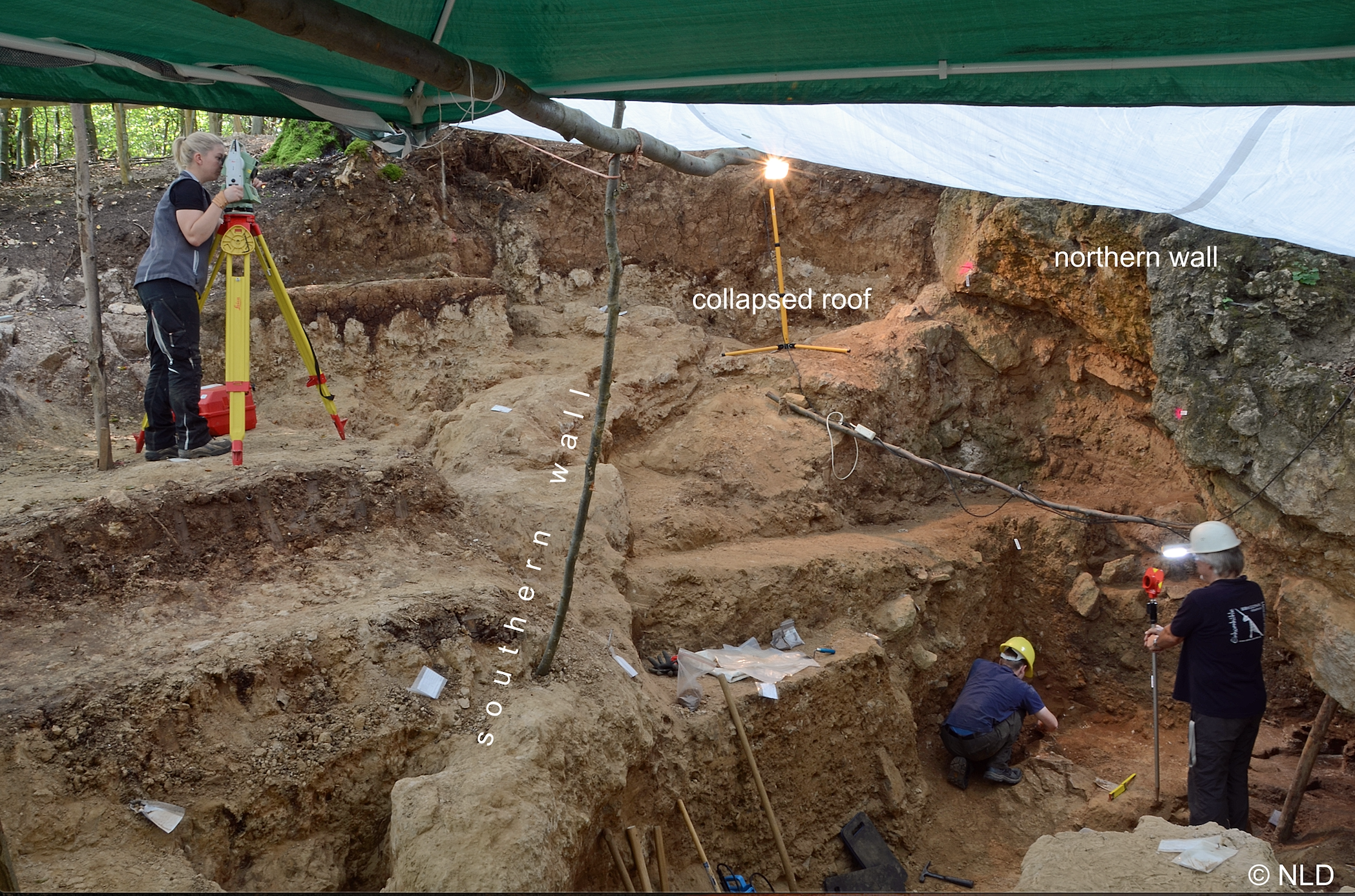Neanderthals Engraved This Ancient Giant Deer Bone Found In ‘Unicorn Cave’
July 5, 2021Every person alive today belongs to the species Homo sapiens, but tens of thousands of years ago, we were not the only human lineage to roam the planet. Across Europe and Asia, our ancestors interacted and even interbred with our close relatives, the now-extinct Neanderthals, whose existence is preserved in fossils and in the DNA of some modern human populations.
For decades, debates have raged over the cognitive abilities of Neanderthals relative to H. sapiens, especially their capacity to independently produce art or engage in symbolic behavior. Now, archaeologists have made a major breakthrough in this field with the discovery of a toe bone from an extinct giant deer that was intricately engraved by Neanderthals more than 51,000 years ago in Germany, before the arrival of our own species in the region.
The engraved bone was found at the mouth of the cave Einhornhöhle (“Unicorn Cave”), which got its name from 16th century rumors that its caverns contained unicorn fossils. It opens a tantalizing window into the symbolic world inhabited by our close cousins, according to researchers led by Dirk Leder, an archaeologist at the State Service for Cultural Heritage Lower Saxony, who announced the discovery on Monday in Nature Ecology & Evolution.
The toe bone (or phalanx), which belonged to the enormous deer species Megaloceros giganteus, was found with a mass of cave bear fossils during recent excavations at Einhornhöhle. Once the specimen had been meticulously cleaned, Leder and his colleagues were able to identify its captivating carvings as five stacked offset chevron patterns. The bone may have been boiled to soften it so that it could be more easily etched with a saw-like tool.
“Before we discovered the engraved bone, we had already excavated some animal bones (red deer, bison) with cut marks, i.e. accidental marks caused during the butchering process,” Leder said in an email. “When we were able to have a first glimpse at the engraved bone before proper cleaning and conservation, we could only see a single engraving that appeared more like a hacking mark rather than a shallow cut.”
“Only when the object was fully cleaned could we clearly see the arranged chevron pattern and after a short debate, we were convinced this must be intentional and probably bears symbolic meaning,” he said.

The lack of an obvious practical function for the bone supports this interpretation, as does the use of a phalanx from this giant deer species, which was not commonly found in the area at the time.
“The use of a giant deer phalanx—a very impressive herbivore—as raw material emphasizes the special character of the modified item, particularly given the paucity of giant deer [55,000 to 35,000 years ago] north of the Alps, which further supports the notion of symbolic meaning,” the researchers noted in the study.
“A designation as a premeditated object that had symbolic meaning is thus the most plausible interpretation for the incised bone,” they added.
Our own human ancestors produced an abundance of artwork, personal adornment, and evidence of abstract thought, which has enabled scientists to trace our imaginative abilities deep into the past. For this reason, Leder and his colleagues weren’t initially sure whether the deer bone was crafted by Neanderthals or H. sapiens.
To shed light on that question, the team conducted radiocarbon dating on the phalanx, which revealed that the object is at least 51,000 years old. The earliest evidence for H. sapiens in this region of Central Europe, meanwhile, dates back some 43,000 years. This timeline is extremely important because it supports the notion that Neanderthals developed symbolic behavior independently from H. sapiens, rather than simply adopting these rituals through interactions with our species.
“Only when we received the radiocarbon date some months later, there was this ‘Eureka!’ moment when all the puzzle pieces came together,” Leder said.
The newly discovered deer phalanx is not the only example of similar symbolic behavior in Neanderthals, but it is a rare and astonishing piece of craftsmanship from an era when our cousins were the dominant humans in Central Europe. As a result, the bone reveals “important new information” about symbolic thought in Neanderthals, demonstrating that “the cultural influence of H. sapiens as the single explanatory factor for abstract cultural expressions in Neanderthals can no longer be sustained,” according to the study.
This rare find illuminates our understanding of Neanderthals, but it also raises many new questions, such as what its exact function or meaning was to its creators. This problem is “difficult to answer,” Leder said.
“As we outlined in the publication, we applied cutting edge high-tech (micro-CT-scans, 3D digital microscopy) to detect any telling evidence for the wearing of the object as a pendant on a string or as a bodily ornament,” he noted. “These results were inconclusive.”
“What is, however, interesting is the fact that this object stands on its base, so to us it seems quite possible that Neanderthals left this object behind at Einhornhöhle for display and similar purposes,” Leder added.
The archaeologists plan to continue excavations as Einhornhöhle in search of other engraved items that might be stashed in the cave. These efforts could help to reconstruct the broader story of symbolic expression in various human species, from the abstract patterns shown in this deer bone and other artistic works of its period, to the spectacular paintings of animals and human figures that appear thousands of years later in the caves of France and Spain, which are more clearly linked to H. sapiens.
“To me, this bears the question of what this means in terms of human cognitive evolution, which takes us back to one of the most essential questions that archaeology (among other disciplines) aims to address—how humans became human,” Leder concluded.
